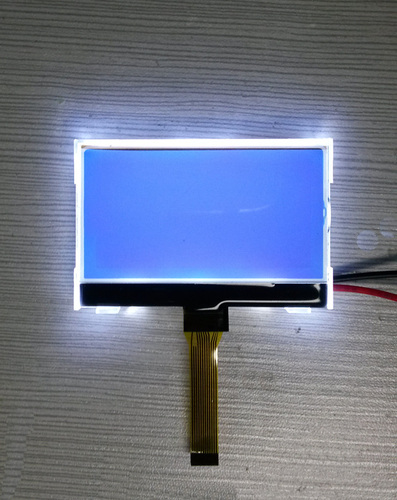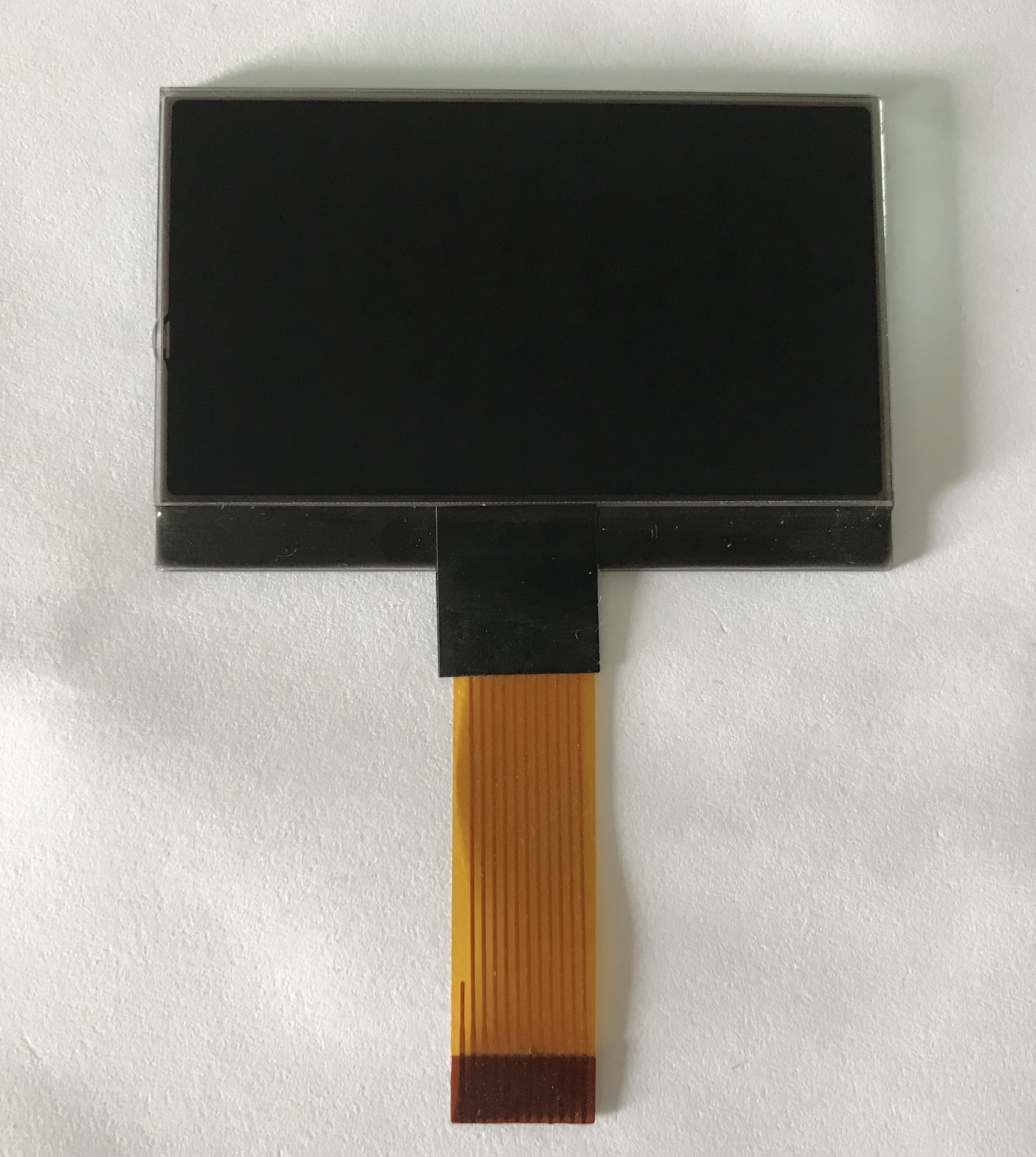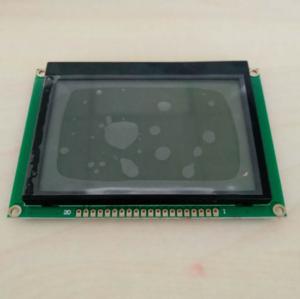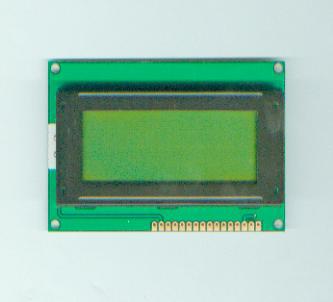LCD Display Parts: Complete Component Guide
A comprehensive overview of LCD display parts, their functions, technical specifications, and applications in modern display technology.
Understanding LCD Display Parts
Liquid Crystal Display (LCD) technology has revolutionized visual interfaces in countless devices we use daily. From smartphones and televisions to medical equipment and industrial control panels, LCD displays have become ubiquitous due to their versatility, energy efficiency, and high-quality visual output. To fully appreciate the complexity and functionality of these displays, it's essential to understand the various LCD display parts that work together to create the images we see.
LCD display parts consist of several key components, each with a specific role in the display process. These components include the liquid crystal layer, glass substrates, polarizers, color filters, backlight unit, and various electronic circuits. Each of these LCD display parts plays a crucial role in converting electrical signals into visible light patterns that form the images on the screen.
In this comprehensive guide, we will explore each of these LCD display parts in detail, examining their structure, function, and importance in the overall display system. We will also compare different types of LCD technologies, discuss technical specifications, and provide insights into troubleshooting common issues related to LCD display parts.

Cross-sectional view of LCD display parts showing the layered structure
Core LCD Display Parts

Glass Substrates
One of the fundamental LCD display parts, glass substrates are thin, transparent sheets that form the foundation of the display. These substrates are typically made of calcium-sodium glass, carefully polished and coated with a transparent conductive layer (usually indium tin oxide, ITO) to form electrodes.
The glass substrates in LCD display parts must meet strict requirements for flatness, transparency, and chemical resistance. They are responsible for containing the liquid crystal material while allowing electrical signals to pass through to control the orientation of liquid crystal molecules.

Liquid Crystal Layer
The liquid crystal layer is the heart of LCD display parts, situated between the two glass substrates. This layer consists of liquid crystal molecules that exhibit properties of both liquids and solids, allowing them to flow like a liquid while maintaining a crystalline molecular structure.
The unique properties of liquid crystals enable them to change their orientation in response to electrical signals. This orientation change affects the way light passes through the material, forming the basis of how LCD display parts create images by controlling light transmission at the pixel level.

Polarizers
Polarizers are essential LCD display parts that control the direction of light passing through the display. Each LCD has two polarizers, typically oriented perpendicular to each other, placed on the outer surfaces of the glass substrates.
The first polarizer (closest to the backlight) converts unpolarized light into polarized light vibrating in a specific direction. The liquid crystal layer then rotates this polarized light based on the applied voltage, and the second polarizer (closest to the viewer) blocks or transmits the light depending on its orientation, creating the明暗 patterns that form images on LCD display parts.

Color Filters
Color filters are critical LCD display parts that enable full-color image reproduction. These filters consist of red, green, and blue (RGB) subpixel elements arranged in a repeating pattern on one of the glass substrates.
Each subpixel in LCD display parts corresponds to a specific color filter, allowing precise control over the intensity of each primary color. By adjusting the voltage applied to each subpixel, LCD display parts can produce a wide range of colors by combining different intensities of red, green, and blue light. The quality and precision of color filters significantly impact the color accuracy and gamut of LCD displays.

Backlight Unit
Unlike emissive display technologies, LCD display parts do not produce their own light. Instead, they rely on a backlight unit (BLU) to provide illumination. The backlight is one of the most important LCD display parts, as it directly affects the brightness, uniformity, and power consumption of the display.
Modern LCD display parts primarily use light-emitting diode (LED) backlights, which offer advantages over older cold cathode fluorescent lamp (CCFL) technology, including higher efficiency, longer lifespan, and better color performance. The backlight unit in LCD display parts typically includes LEDs, a light guide plate, and various optical films (diffusers, brightness enhancement films) to ensure uniform light distribution across the display surface.

Driver Circuits
Driver circuits are essential LCD display parts that control the operation of the display by delivering electrical signals to the liquid crystal layer. These circuits include source drivers and gate drivers, which work together to address each pixel individually.
The gate driver in LCD display parts controls the rows of pixels, while the source driver controls the columns. By sequentially activating each row and applying the appropriate voltage to each column, LCD display parts can create complex images by controlling the orientation of liquid crystal molecules at each pixel location. The driver circuits must operate with high precision to ensure image quality and minimize power consumption in LCD display parts.
Technical Parameters of LCD Display Parts
LCD Panel Technology Comparison
| Parameter | TN Panel | IPS Panel | VA Panel |
|---|---|---|---|
| Response Time | Fast (1ms) | Medium (4ms) | Slow (8ms) |
| Viewing Angle | Narrow (160°/170°) | Wide (178°/178°) | Medium (170°/170°) |
| Color Performance | Good (6-bit + FRC) | Excellent (8-bit) | Very Good (8-bit) |
| Contrast Ratio | Low (1000:1) | Medium (1500:1) | High (3000:1+) |
| Power Consumption | Low | Medium | Medium-High |
| Cost | Low | Medium-High | Medium |
| Best For | Gaming, Budget Displays | Professional Work, Gaming | Media Consumption |
Backlight Technology Comparison
| Parameter | CCFL | Edge LED | Direct LED |
|---|---|---|---|
| Brightness | Low-Medium | Medium-High | High |
| Uniformity | Good | Average | Excellent |
| Power Efficiency | Low | High | Medium |
| Lifespan | 50,000 hours | 100,000 hours | 100,000 hours |
| Thickness | Thick | Thin | Medium |
| Cost | Low | Medium | High |
Resolution Comparison
| Resolution | Pixel Count | Typical Usage | Aspect Ratio |
|---|---|---|---|
| HD (720p) | 1,280 × 720 | Small displays, budget TVs | 16:9 |
| FHD (1080p) | 1,920 × 1,080 | Monitors, mid-range TVs | 16:9 |
| QHD (2K) | 2,560 × 1,440 | High-end monitors | 16:9 |
| UHD (4K) | 3,840 × 2,160 | High-end TVs, monitors | 16:9 |
| 8K | 7,680 × 4,320 | Premium TVs | 16:9 |
权威 Literature on LCD Display Parts
"Liquid Crystal Displays (LCDs) are already widely used in consumer electronics, but research and development is still ongoing. The shifting focus of research follows a pattern of improved definition, increased display size, wider viewing angles and faster responses, with improvements in each area influencing the next. There is also growing interest in the use of liquid crystal materials in novel applications including sensing devices, spatial modulators and light-shielding windows."
High Quality Liquid Crystal Displays and Smart Devices - Volume 1: Development, display applications and components
Edited by Shoichi Ishihara, Shunsuke Kobayashi, Yasuhiro Ukai
Published in 2019 by IET Digital Library
LCD Display Parts Market Trends
The global market for LCD display parts has experienced significant growth in recent years, driven by the increasing demand for high-quality displays in consumer electronics, automotive, and industrial applications. According to industry reports, the LCD display parts market is expected to reach $XX billion by 2025, with a CAGR of X% from 2020 to 2025.
Key factors contributing to this growth include advancements in LCD display parts technology, such as the development of high-resolution panels, improved backlighting solutions, and enhanced color reproduction capabilities. Additionally, the increasing adoption of LCD displays in emerging applications, such as automotive infotainment systems, smart home devices, and digital signage, is driving the demand for specialized LCD display parts.
常见问题与解决方案
What causes backlight failure in LCD display parts?
Backlight failure is a common issue in LCD display parts, often caused by faulty LEDs, damaged inverter circuits, or worn-out CCFL tubes in older displays. Symptoms include a dim screen or no display at all, even though the device may still be functioning.
Solution: Replace the defective backlight components, which may involve changing individual LEDs, the entire LED strip, or the inverter board in LCD display parts. For CCFL backlights, replacing the tubes and checking the inverter is recommended.
How to fix pixel defects in LCD display parts?
Pixel defects in LCD display parts can manifest as dead pixels (permanently black), stuck pixels (permanently lit), or hot pixels (abnormally bright). These issues typically result from manufacturing defects or physical damage to the LCD panel.
Solution: For stuck pixels, gently massaging the affected area or using pixel recovery software may help. Dead pixels usually require replacing the LCD panel, which is one of the most expensive LCD display parts. Some manufacturers offer pixel defect policies that cover displays with a certain number of defective pixels.
What causes color distortion in LCD displays?
Color distortion in LCD display parts can be caused by several factors, including damaged color filters, incorrect gamma settings, faulty driver circuits, or issues with the backlight system. This problem may appear as washed-out colors, color banding, or incorrect color reproduction.
Solution: First, check and adjust the display settings. If the issue persists, it may indicate a hardware problem with the LCD display parts. Damaged color filters or driver circuits typically require professional repair or replacement of the affected components.
How to resolve backlight bleeding in LCD display parts?
Backlight bleeding occurs when light from the backlight unit leaks around the edges of the LCD panel, resulting in uneven brightness and visible light spots. This issue is particularly noticeable in dark environments and is often caused by poor manufacturing quality or physical pressure on the display.
Solution: For minor backlight bleeding, adjusting the brightness settings may help. In more severe cases, replacing the LCD panel or backlight unit may be necessary. Ensuring proper ventilation and avoiding physical pressure on the display can prevent backlight bleeding in LCD display parts.
What causes image persistence in LCD displays?
Image persistence, also known as ghosting, occurs when a faint image remains on the screen even after the display content has changed. This issue in LCD display parts is caused by the liquid crystal molecules remaining in their previous orientation for an extended period.
Solution: To resolve image persistence, display a white screen or dynamic content for several hours. For severe cases, use specialized screen refresh tools. To prevent this issue, avoid displaying static content for extended periods and use screen savers or power-saving modes when the display is not in active use.
How to maintain and extend the lifespan of LCD display parts?
Proper maintenance is essential for maximizing the lifespan of LCD display parts. Factors such as temperature, humidity, and usage patterns can significantly impact the longevity of LCD displays.
Solution: Keep the display in a temperature-controlled environment, avoid direct sunlight exposure, and maintain moderate humidity levels. Reduce brightness when possible to minimize strain on the backlight. Regularly clean the screen with appropriate materials to prevent damage to the polarizer. Avoid displaying static content for extended periods to prevent image persistence and wear on LCD display parts.
专业术语
TFT-LCD
Thin Film Transistor Liquid Crystal Display. A type of LCD that uses thin film transistor technology to improve image quality and response time by providing individual control of each pixel.
IPS
In-Plane Switching. A type of LCD panel technology that offers wide viewing angles and improved color reproduction by aligning liquid crystal molecules parallel to the glass substrates.
VA
Vertical Alignment. A type of LCD panel technology that provides high contrast ratios by aligning liquid crystal molecules perpendicular to the glass substrates when no voltage is applied.
TN
Twisted Nematic. A type of LCD panel technology that offers fast response times but limited viewing angles by twisting liquid crystal molecules between two polarizers.
CCFL
Cold Cathode Fluorescent Lamp. A type of backlighting technology used in older LCD displays, replaced in most modern LCD display parts by LED backlighting.
LED
Light-Emitting Diode. A type of backlighting technology commonly used in modern LCD display parts, offering higher efficiency and better color performance than CCFL.
BLU
Backlight Unit. The component in LCD display parts responsible for providing illumination to the liquid crystal panel, consisting of a light source and various optical films.
LGP
Light Guide Plate. A component in LCD display parts that distributes light from the backlight source evenly across the entire display surface.
ITO
Indium Tin Oxide. A transparent conductive material used in LCD display parts to create electrodes on the glass substrates.
COG
Chip On Glass. A technology used in LCD display parts to mount driver ICs directly on the glass substrate, reducing the size and weight of the display module.
COF
Chip On Film. A technology used in LCD display parts to mount driver ICs on a flexible film, allowing for thinner bezels and more flexible display designs.
GOA
Gate On Array. A technology used in LCD display parts to integrate gate driver circuits directly on the glass substrate, reducing the number of external connections and enabling narrower bezels.
Ready to Learn More About LCD Display Parts?
Explore our comprehensive resources and expert guides to gain a deeper understanding of LCD display parts and their applications in modern technology.
Learn moreInteractive LCD Display Structure

Select a Part
Click on any part of the LCD structure diagram to view detailed information about that component.